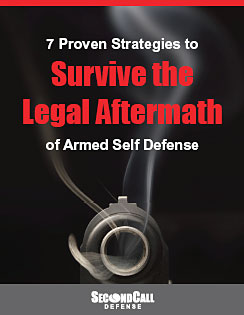A Fitting Solution: What Makes A Firearm Right For You
Keith Coniglio
Modern materials and design have allowed a lot of firepower to be jammed into a very diminutive package. In fact, manufacturers seem to be in constant competition to develop the most compact, lightweight pocket rocket to corner the concealed carry market.
There is nothing wrong with this lot of “barely there” guns – they’re an engineering boon to concealed carry – but the marketing hype that surrounds them may be doing a disservice to those just discovering their Second Amendment rights.
There has been a huge influx of new shooters over the past decade and not all of them intend to carry a concealed pistol. Many are looking for a defensive handgun for around the home or for a training tool to develop their skills. Most have never been taught how to measure a pistol for proper hand fit.
Too many think there’s a correlation between the physical size of a shooter and the size of their gun, leading smaller-framed people to guns that are unpleasant to shoot and difficult to master. Some believe that this correlation exists for caliber as well, unnecessarily limiting themselves to underpowered cartridges or driving themselves to adopt punishing ones merely because of their own builds.
For these people, “going big” might be a better choice, whether in caliber or in handgun size. The best way to determine what is most suitable, however, is to understand a little more of the science of shooting.
Much is made of federal, state, and municipal laws covering firearms, but many forget (or are unaware of) the most important governing laws of all: physics. Free recoil is determined by the energy produced by the fired round and the mass of the firearm shooting it. That’s a fairly simple (if nerdy) declaration but, as an instructor specializing in introducing people to firearms, it has been a profound revelation to some of my students. New shooters are often shocked to learn that “a little gun” doesn’t correlate to “a little recoil.”
The recoil energy generated by a firearm has far more to do with the caliber – specifically, the amount of gunpowder burned – than with the gun’s external dimensions. If you fire two identically-sized revolvers, one chambered for .22 rimfire and the other chambered in .38 Special, the larger caliber will generate considerably more recoil. Likewise, if one is chambered in .38 Special and the other in .357 Magnum (identical in bullet diameter, despite their names), the difference is easily discernible due to the increased power charge of the Magnum.
The mass of a firearm also plays an important role in determining recoil. Simply put, the more a pistol weighs, the more mass there will be to dampen that impulse. This may also be independent of size, thanks to modern materials. A larger and seemingly heavier gun may be constructed of alloys such as Scandium or titanium or even polymer plastic, making it “kick” far more than a smaller, all-steel gun in the same caliber.
Recoil is not the only hurdle to overcome in a small pistol. Short barrels provide a shorter sight radius, turning small mistakes into large misses beyond contact distance. This can be especially disheartening for the new shooter seeking to develop proficiency, too often without consistent instruction or range facilities.
Abbreviated grips can also serve to discourage a new shooter by providing less real estate for a secure hold. A case of “finger float” can make a solid firing grip difficult to achieve and may exaggerate recoil. Worse, it can reinforce insecurity in those already worried about being able to safely control their gun.
Accuracy can also be greatly impacted by a poor fit between your pistol and your hand. With a firm firing grip on your handgun (which, of course, you ensured was unloaded), allow your index finger to naturally rest on the trigger. If the gun is well-fitted to your hand, the pad of your finger should make contact, and a small gap will be present between the frame of the gun and your finger.
If you have to cramp your finger to gain this position, the gun’s frame is too small for you (though many guns can mitigate this with backstrap inserts or thicker aftermarket grips). If you have to reach forward to achieve it and your finger is pressed against the frame, the gun is too large (either from the backstrap to the trigger, or in girth).
While it may not seem like much of an issue (if it’s even noticed at all) while window shopping at a gun store, the wrong gun will result in muscle fatigue and poor trigger control at the range. It will likely also result in a subtle, shifting grip under recoil. These, in turn, will have an adverse effect on accuracy, leading to the same frustration, lack of confidence, and loss of interest in further practice inflicted by excessive recoil.
There’s nothing wrong with buying a gun because it simply strikes your fancy. But, especially for a first gun, practical guns should be selected pragmatically, with their end-purpose in mind. Measure the gun to make certain it fits your hand well. Don’t be discouraged from selecting something with mass and a grip that allows a comfortable hold.
Understand that a larger, heavier gun will allow you to comfortably shoot a larger caliber, especially valuable if this will be a home defense arm. And, most important of all, don’t rely on general assumptions or glossy sales rhetoric to determine your selection. Learn about the science, “try before you buy” wherever possible, and choose what’s best for you.
Keith Coniglio is a father, software tester, NRA-certified pistol instructor, and devoted Second Amendment advocate. He is also the editor-in-chief of Descendants of Liberty Press, a site dedicated to rekindling Americans’ passion for – and defense of – their Constitutional rights and personal liberty.
“

